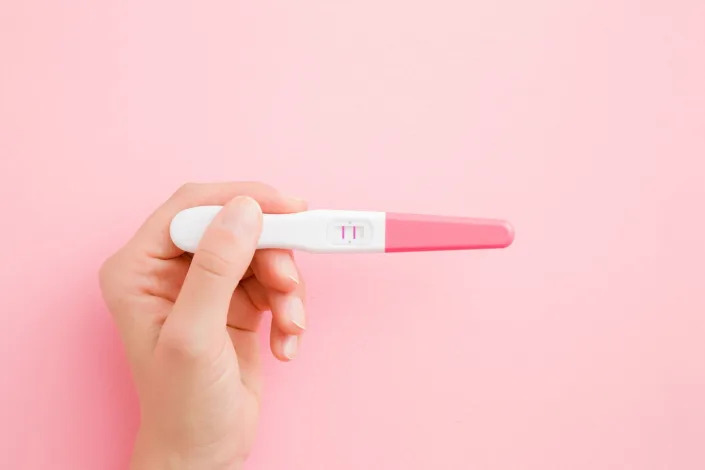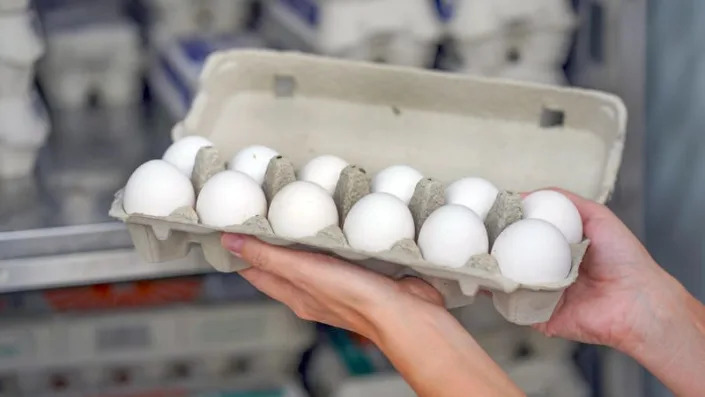YOURI BENADJAOUD and DR. JOHN BROWNSTEIN
Sun, February 5, 2023 at 7:03 AM MST·4 min read
The hit HBO series "The Last Of Us" describes a post-pandemic world devastated by a mass outbreak of a "zombie fungus" that infects and takes over the mind of its hosts. Originally a video game, the popular show was recently renewed for a second season.
Although its premise is science fiction, the fungus in the show is actually based in scientific reality.
Is the 'zombie' fungus real?
Cordyceps – the so-called "zombie fungus" – is a real fungus and is sometimes used in treatments and therapeutics in Chinese herbal medicine.
MORE: Fungal disease on the rise in West possibly tied to changing climate patterns: Experts
Although cordyceps does not infect humans, it does infect a wide range of insects.

PHOTO: Scene from 'The Last of Us.' (Liane Hentscher/HBO)
In ants, cordyceps slowly infects its victims by mind-controlling the host to migrate to a humid climate where the conditions are perfect for its growth. Once a suitable environment has been found, the ant will dig its jaws into a plant and await death.
The fungus will then slowly consume the ant while eventually sending out its own spores – a sort of antenna to enthrall and trap future victims.
Could the 'zombie fungus' threaten human health?
There are thousands of species of cordyceps each designed to infect a particular species – luckily, humans aren't one of them. The human body's immune system is more advanced than that of an ant and has a higher internal temperature, which would protect it from cordyceps infection.
MORE: Review: 'The Last of Us' is a triumph of ferocity and feeling that grabs you and won't let go
However, other fungi have made their presence known throughout human history. Ergot poisoning, also dubbed "St. Anthony's Fire," is caused by the contamination of grain and has been attributed to mass hysteria events such as the Salem Witch trials in the 17th century, Matthew Fisher, Ph.D., a professor of fungal disease epidemiology at the Imperial College School of Public Health, said.
While some fungi have been known to cause hallucinations on very rare occasions, "a human manipulating cordyceps is vanishingly unlikely," Fisher said.
Scientists said that while there are approximately 150,000 species of fungi – with a few million yet to be discovered – only about 200 are known to infect humans.

PHOTO: Scene from 'The Last of Us.' (Liane Hentscher/HBO)
How do fungi currently affect human health?
Fungal infections are responsible for over 150 million severe cases and an estimated 1.7 million deaths per year worldwide, according to one study.
Researchers estimate that nearly a billion people have skin, nail and hair fungal infections annually. More serious fungal infections usually appear in people with other underlying health problems such as asthma, AIDS, cancer, organ transplant recipients and those on corticosteroid therapies.
MORE: More disease, more suicide: Study shows human cost of climate change
In a detailed report, the World Health Organization warned in October, 2022, of 19 fungal pathogens representing the greatest threat to public health.
Yet, fungal infections receive less than 1.5% of infectious disease funding while killing more people than tuberculosis – a leading infectious disease killer worldwide.
"It's really shocking that research on fungal pathogens is so underfunded. Biohazardous threats are much broader than just bacteria and viruses," Jessica Malaty Rivera, infectious disease epidemiologist and research fellow at Boston Children's Hospital and The Johns Hopkins Center for Health Security, told ABC News.
Will there be a pandemic caused by fungal infections?
While some fungi can be transmitted from person to person, they generally do not spread as easily or quickly as viruses. Additionally, the human body's immune response and the availability of antifungal medications make it less likely that a fungus would be able to cause a global outbreak.
Fungal infections are responsible for over 150 million severe cases and an estimated 1.7 million deaths per year worldwide, according to one study.
Researchers estimate that nearly a billion people have skin, nail and hair fungal infections annually. More serious fungal infections usually appear in people with other underlying health problems such as asthma, AIDS, cancer, organ transplant recipients and those on corticosteroid therapies.
MORE: More disease, more suicide: Study shows human cost of climate change
In a detailed report, the World Health Organization warned in October, 2022, of 19 fungal pathogens representing the greatest threat to public health.
Yet, fungal infections receive less than 1.5% of infectious disease funding while killing more people than tuberculosis – a leading infectious disease killer worldwide.
"It's really shocking that research on fungal pathogens is so underfunded. Biohazardous threats are much broader than just bacteria and viruses," Jessica Malaty Rivera, infectious disease epidemiologist and research fellow at Boston Children's Hospital and The Johns Hopkins Center for Health Security, told ABC News.
Will there be a pandemic caused by fungal infections?
While some fungi can be transmitted from person to person, they generally do not spread as easily or quickly as viruses. Additionally, the human body's immune response and the availability of antifungal medications make it less likely that a fungus would be able to cause a global outbreak.

Stock photo of cordyceps mushroom in a laboratory.
It is unlikely that a single fungus would cause a global pandemic on the same scale that we've seen with COVID-19. Viruses typically spread through respiratory droplets whereas fungal infections spread through direct skin-to-skin contact or from sharing items.
Despite a low possibility of spurring a worldwide pandemic, the global burden of fungal infections remains high. "Many of these infections can be incredibly difficult to treat and have high mortality rates," Rivera said.
Is climate change making things worse?
While it is highly unlikely climate change would lead to a zombie-like apocalypse according to experts, the warming of the globe continues to pose a threat to global health.
Research has shown that global pandemics from infectious diseases may become more common as habitats continue to bleed into one another and animals are exposed to species they have never interacted with before, while the space between humans and the natural world shrinks.
MORE: Increasingly warming planet jeopardizes human health, major report warns
A new study also found that when scientists increased the temperature of a particular fungus was exposed to, the pathogen could adapt with certain genetic changes.
"These mobile elements are likely to contribute to adaptation in the environment and during an infection," postdoctoral researcher Asiya Gusa Ph.D. of Molecular Genetics and Microbiology in the Duke School of Medicine said in a press release accompanied with the study. The research may suggest that pathogenic fungi can adapt to the planet's warmer temperatures as well – highlighting the danger of global warming.
"It is clear that in a warmer wetter world, we are going to be exposed to more [fungi] than ever before – signs of this were seen during Hurricane Katrina – and this is going to pose an increased public health stress," Fisher said.
"If we are going to really tackle climate change, we have to get more specific about the impact it has on public health," Rivera said.
The science behind the zombie fungus from 'The Last of Us' originally appeared on abcnews.go.com












